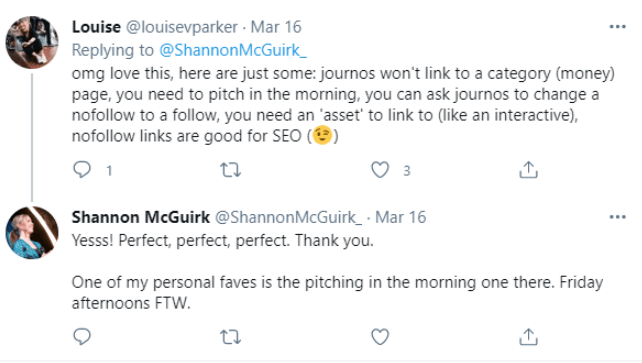Common digital PR mistakes and how to avoid them
Digital PR is a craft. One slip-up in the process can be the difference between securing lots of relevant coverage and links for your client, to returning back to the drawing board to pivot your strategy.
As marketers, we have all been there.
You nurture an idea from the initial brainstorm – from creating the content and any assets which may accompany it, to outreaching the finished product, so when the results don’t start flooding in it can be disappointing.
To ensure your next campaign has the best head start, we have shared some of the most common digital PR mistakes we see still being made and how you can avoid these to generate success.
Don’t forget relevance
This is probably one of the most important elements in any digital PR activity, yet one that still seems to be absent from so many campaigns. Topical relevance is key to the wider success of digital PR. Whether that is putting a client forward for an expert comment, newsjacking or launching a new campaign, you need to ask:
- Does this campaign amplify your client to their target audience?
- Will this campaign position your client as a thought leader in their space?
- Does your client have the authority to talk about this topic?
- Does your campaign solve a problem or issue being discussed in the media? This will determine how ‘newsworthy’ your campaign is and will ensure your client is adding value to the subject.
Ensuring your client fits in naturally with the topic of your campaign is one thing, but equally you need to assess whether the campaign is relevant to your clients’ audience. You can assess this by asking:
- What is relevant to the audience?
- What do the audience care about?
- Where are your clients’ audiences?
In digital PR we base our success on securing results with the top-tier nationals. They have an impressive readership and their websites are extremely authoritative in Google’s eyes, but when it comes down to relevance for your client, it doesn’t always mean you’ve struck gold. If your client’s audience aren’t reading the Metro or Forbes for instance, then will their readers be engaging with the content? Will the links ultimately drive traffic back to your client’s website?
If you’re looking for a tool that can back up how relevant your campaign is, SharedCount allows you to track engagement levels of a campaign, how many people are clicking through and how many sales the campaign has created.
Don’t limit your time to pitch
Gone are the days of outreaching strictly before 11am, Monday to Thursday. Today we embrace a more fluid style of outreach. With working from home set to be the future and the traditional 9-5 office hours a distant memory, the way of working across all industries is becoming more flexible.
Sending a pitch on a Friday afternoon could mean your email isn’t caught up in the influx of pitches during the middle of the week giving you a more competitive edge. However, this will need to be weighed up with the tone of the story. Is it a light-hearted story that would be suitable for weekend journalists? Or, is it a hard-hitting news story that would be well-received by a reporter early on a Tuesday morning? Muckrack released a guide to pitching in 2020 which can be accessed here.
Don’t rely on interactive assets
Assets for campaigns don’t have to be lavish and expensive. You can still generate a strong success rate with a simple campaign and a static graphic. A campaign that is “stunt” led can have risk associated with it from both a cost and result perspective. If you’re working on smaller campaigns, the next layer you need in your storytelling and outreach is a simple creative that supports the story, data or findings.
Lower risk creative/data visualisations like statics or tables to start with, such as reports, index formats and maps, are effective and can open up outreach targets.
Don’t give up after the first outreach
Do keep contacting journalists even if they don’t reply to the first email. Just don’t send them the same content again – tweak the headline of the campaign, the subject line and offer new data points to give the journalist a different angle to consider.
To give your campaign another chance at success, do:
- Dive back into the data – is there another top 10 list?
- Look for reactive opportunities
- Analyse success and feedback – why didn’t it work? Always learn from it and step ahead
- Delegate actions so that your team are covering all bases
Do think like a journalist
All reporters and journalists are different and will have their preferences when it comes to receiving emails from PRs. However, one thing they share in common is that they are busy people. In Susie Bearne’s webinar; ‘Lessons from a journalist: How to Secure Press Coverage’ she highlights that some Daily Mail editors will receive 10,000 emails a day. Journalists are stressed, busy and will be relying on pithy press releases, tip-offs and sources for their stories. To land coverage and campaigns successfully you need to think like a journalist. Ask yourself:
- What makes this a story?
- Keep communications short, smooth and to the point
- Don’t pitch similar clients if they’ve just covered another client in that industry – hold off and pitch to another title.
- Could you hook your news to a current story?
- Does your story provide a fresh and unique angle? i.e. Are you the first to launch a particular product? Is there something unique about your business that’s worth talking about?
Do be selective with your media list
Only approach the most relevant journalists to your campaign. Research the magazines, newspapers and online titles you and your client’s audience might be engaging with. By targeting and emailing solid stories you can build relationships with key journalists who cover your sector. As a general rule we would avoid exceeding a media contact list of more than 60-70 journalists. If you have hundreds of media contacts in your list, this would suggest you are mistargeting and spamming the inboxes of journalists that are irrelevant to your campaign.
The last thing you want is to end up blacklisted from a journalist who could be very valuable to your next campaign. Media list building is a quality-over-quantity game and this will yield the best results.
If you’re looking for further digital PR campaign success then check out Distinctly’s PR Campaign of the Month which details our ideas, process and the results we accumulated.




